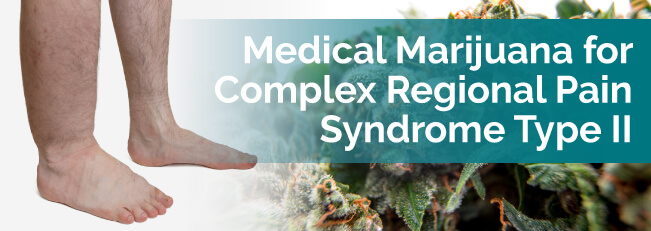
Complex Regional Pain Syndrome Type II, or CRPS II, is a rare, sometimes progressive condition that often makes you particularly sore. It’s characterized by feeling severe burning pain, changes in your skin and inflammation. This suffering can understandably get you down. Below, we look at CRPS II and how it affects you, the symptoms you could suffer from and how medical marijuana for CRPS II can help you get some natural relief from your pain.
CRPS II is a painful, long-term condition that usually affects one of your limbs after an injury. As you might have guessed, doctors have identified two types: CRPS I and CRPS II. In this article, we are focusing on type II, though the stages and symptoms of both are the same.
Formerly known as causalgia, CRPS II is diagnosed when individuals have a confirmed associated nerve injury. On the other hand, patients who do not have a confirmed injury to their nerves are classified as having CRPS I.
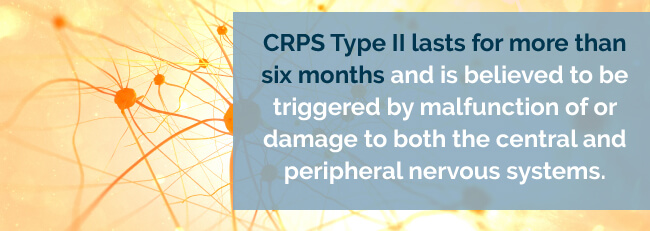
Type II lasts for more than six months and is believed to be triggered by malfunction of or damage to both the central and peripheral nervous systems.
Type II causalgia, or CRPS, shows visible evidence of nerve damage. Unlike Type I, sufferers with Type II rate their pain, on average, at 42 out of 50. Evidence suggests symptoms of CRPS II are both physical and psychological, with increased depression and anxiety as common side effects. Physicians have recommended patients increase their daily Vitamin C intake, as it can reduce the risks of CRPS after initial injuries.
Stage one — Characterized by a severe, burning pain at the site of the injury. Muscle spasms, restricted mobility, joint stiffness and rapid hair and nail growth are all stage one symptoms.
Stage two — Characterized by more severe, intense pain. Swelling can spread, nail and hair growth can diminish, muscles atrophy and osteoporosis become significantly more prominent and joints thicken.
Stage three — Characterized by irreversible changes in the bones and skin, the pain may involve entire limbs. Severe, marked muscle atrophy and severely limited mobility in affected areas with flexor tendon contractions commonly occur in stage three. Occasionally, the limb may become displaced from its usual, normal position.
CRPS symptoms can be mild and can eventually go away. However, in severe cases, patients may never fully recover and might become disabled. There is no cure for CRPS.
According to the Indian Journal of Plastic Surgery, probably the first documented description of the syndrome is found in a 16th-century report from Ambroise Pare. The report detailed the ongoing contractures and pain King Charles IX experienced after a bloodletting procedure.
Silas Weir Mitchell, who is known as the father of U.S. neurology, recorded the first detailed description of CRPS in 1864. Mitchell, in collaboration with George Morehouse and William Keen, noted a frequent and exaggerated presence of pain in injured veterans of the American Civil War.
Mitchell also coined the name causalgia from the Greek words for fire (kausis) and pain (algos). Mitchell’s term for the condition is fitting, as sufferers report terrible burning pain when living with CRPS II.
If you think you might be suffering from CRPS II, there are many signs to look out for. These include:
Your symptoms can change with time, and they also vary from individual to individual. The most common ones to occur first are hypersensitivity to touch and cold, pain, noticeable changes in temperature, redness and swelling. Eventually, your affected area may become pale and cold. There will also be noticeable skin and nail changes alongside muscle tightening and spasms. Your condition is often irreversible when you get to this stage.
For some people, the symptoms of the disorder disappear on their own. In others, symptoms can potentially last for months and even years. The syndrome can sometimes spread to your other limbs and can be exacerbated by emotional stress.
Treatment is most effective when it begins soon after the disease onset, and there’s also a higher likelihood of remission from the condition.
No one enjoys being in pain. When that pain doesn’t fade, and you need to face it each day of your life, your existence can become unbearable. Chronic pain has a profoundly negative effect on your life, especially when drugs don’t give you the relief you hope for. You can find you don’t recognize yourself anymore as you’ve become impatient, angry and short-tempered. You might also find difficulty in concentrating and carrying out everyday tasks.
After a while, pain can wear you down, draining your motivation and sapping your energy. You might shy away from people and activities you once enjoyed, or feel anxious, depressed and isolated. You could feel like just shutting yourself away.
Medical marijuana often helps alleviate some of the debilitating symptoms of CRPS.
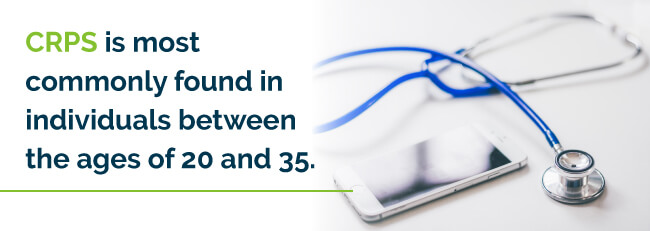
Here are some statistics to help you learn more about CRPS:
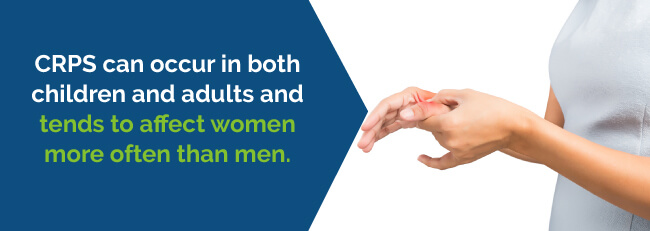
Currently, physical and occupational therapy are the most common forms of treatment used to combat the symptoms of CRPS. Additionally, spinal cord injections, local anesthetic, blocks/injections and intramuscular Botox injections are commonly practiced on patients suffering from this condition. Doctors often prescribe anti-anxiety and anti-depression medications to deal with the emotional toll this condition can take. Medical marijuana can effectively work to combat the associated stresses, anxieties and depression that comes with the condition. Moreover, cannabidiol treatment can successfully aid patients in minimizing chronic pain, muscle spasticity, inflammation, joint stiffness and lack of mobilization.
After discussing your symptoms and medical history with you, and carefully examining your affected limb, your health care practitioner will determine the best course of treatment for you. There is currently no single test available to make a CRPS II diagnosis. Your doctor may schedule MRI scans, X-rays and bone scans to contribute to making a firmer diagnosis.
Time is of the essence when diagnosing and treating the syndrome to minimize pain and personal suffering. There are both surgical and nonsurgical treatments to consider.
These are the typical nonsurgical treatments you can expect when you’re first diagnosed with CRPS II:
There are some surgical treatments available if nonsurgical treatment fails. These include:
Some exciting new research shows marijuana seems to be effective for the most debilitating symptoms of CRPS. A paper published by The American Pain Society in February 2013 reported that vaporized pot, even in a low dose, gave CRPS sufferers a significant decrease in pain, while also allowing them to function more normally.
CRPS I and II are both qualifying conditions for medical pot in Illinois and Connecticut. Medical cannabis for CRPS II seems to provide effective relief for sufferers.
Cannabis can be helpful for treating many of the symptoms of CRPS II. Medical pot can be eaten, smoked, vaped or used in liquid form and is an excellent pain treatment. Marijuana is also commonly prescribed to treat anxiety and depression, which are common issues for CRPS II patients.
Marijuana for CRPS is also far less expensive than conventional medications. Additionally, cannabis doesn’t damage your organs, whereas traditional painkillers often do.
Let’s look at some different strains of cannabis for CRPS and how they might help your symptoms.
If you’re looking for more information on marijuana and CRPS, there are so many strains of marijuana available today that it’s easy to be confused. We’ve put together a starter’s guide to help you decide what ones might be best for your symptoms.
Pain. Pain is the most debilitating symptom you’ll have to deal with when you have CRPS II. In fact, probably nothing impacts your quality of life like chronic pain. If you’re unhappy with conventional painkillers, cannabis is a natural and gentle pain reliever. Look at purchasing strains that have strong painkilling effects. These include:
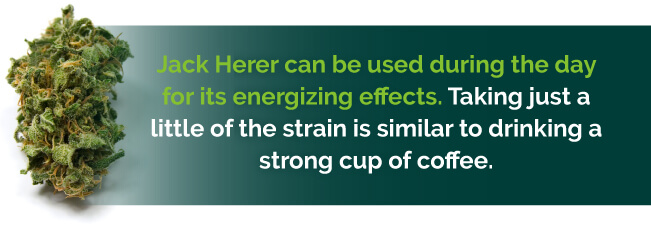
Depression. Depression can often creep up on you when you’re in chronic pain, stopping you from leading a fulfilled and happy life. You might feel there’s no point in getting out of bed in the morning when you’re depressed. If you feel down, the following strains can lift you back up again:
Anxiety. Anxiety can accompany low and depressive feelings. You could constantly feel on edge and worried about the future. These three strains are particularly useful if this sounds like you:
Coping with CRPS II can be a tough and debilitating reality. There’s lots more help and information if you’re interested in knowing more about how medical pot can help you. You can try speaking to other people with your diagnosis and asking them how pot has changed their lives. There’s also a wealth of anecdotal evidence and information available online.
However, the best route forward is to speak to the professionals. To begin a natural treatment regimen and to discover more about cannabis and CRPS II, search for a medical marijuana doctor or marijuana dispensary today. With our marijuanadoctors.com medical marijuana portal, we can help improve your quality of life if you’ve been living with CRPS.
Looking for more information about CRPS I, CRPS II, Causalgia, or Reflex Sympathetic Dystrophy? Check out our additional resources below:
Find A Doctor Find A Dispensary